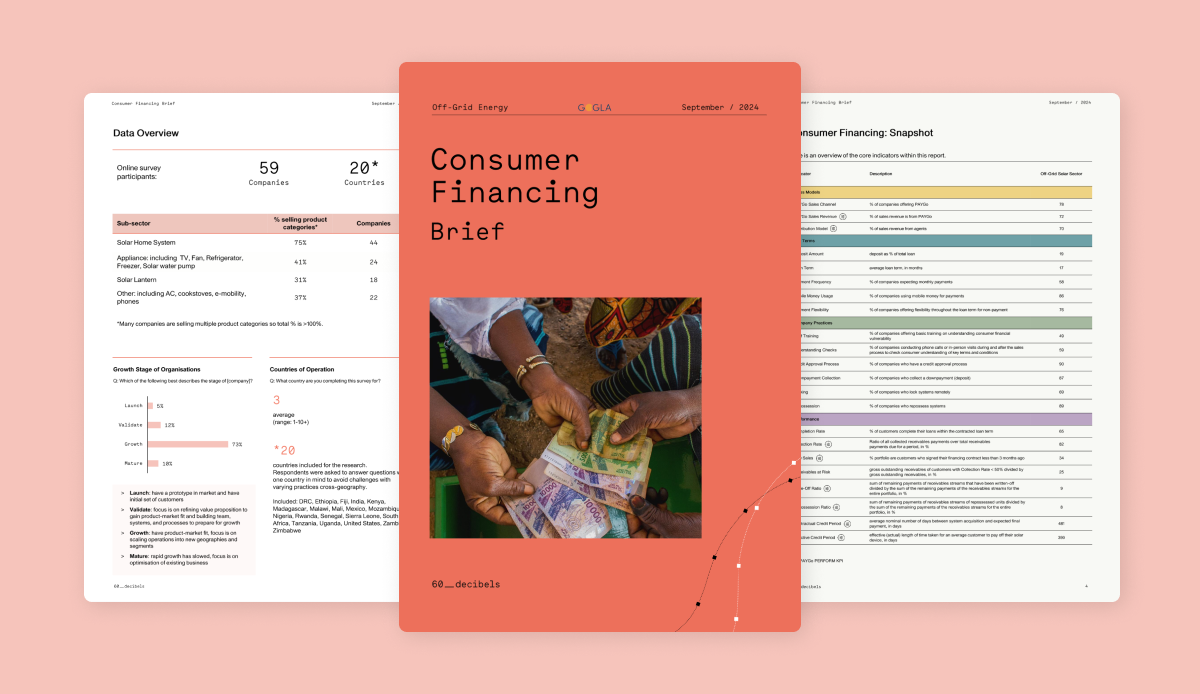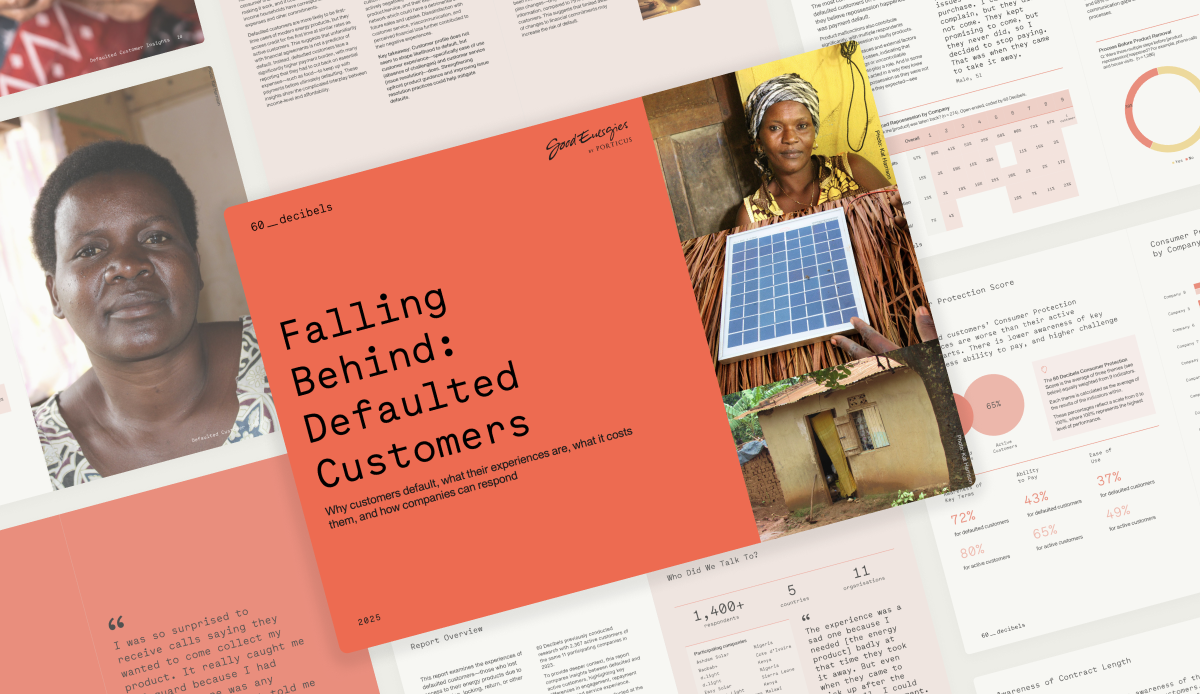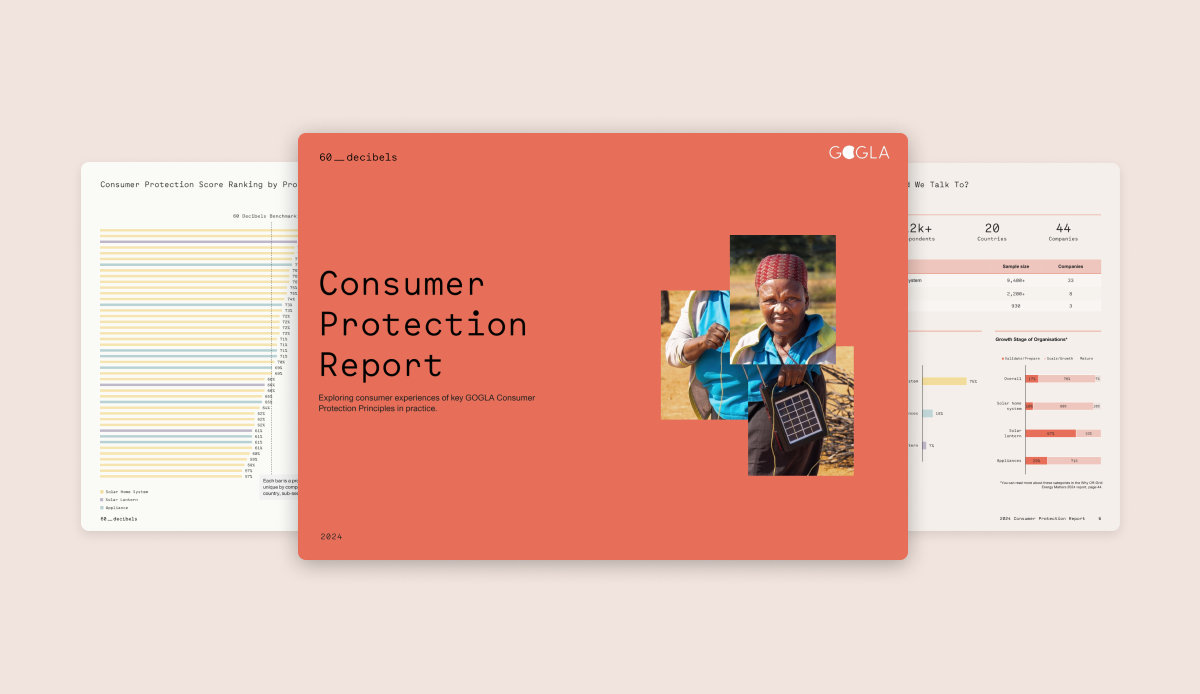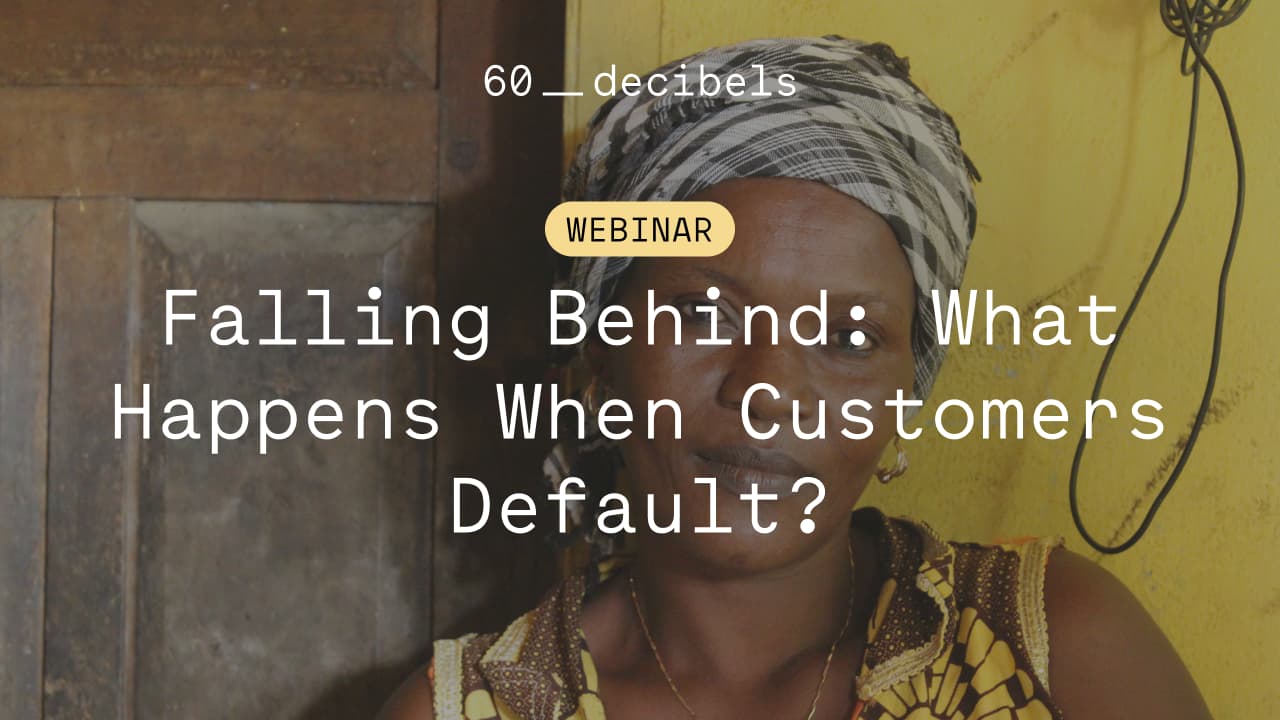

Falling Behind: Defaulted Customers
1,400+
5
11
With support from Good Energies Foundation, Falling Behind: Defaulted Customers examines the experiences of defaulted customers–those who lost access to their energy products due to repossession, locking, return, or other factors.
It delves into four key areas of exploration:
> Who: Profiling defaulted customers by analyzing demographics, socioeconomic factors, and their prior access to energy and consumer financing.
> Experience: Assessing fairness, transparency, and the challenges faced by defaulted customers, using the 60 Decibels Consumer Protection Score.
> Why: Identifying the reasons for lapsed payments and understanding how customers came to have their product locked or repossessed.
> Impact: Understanding the current energy access status of defaulted customers and whether they have switched to alternative energy sources or are unserved.
To provide deeper context, this report compares insights between defaulted and active customers, highlighting key differences in engagement, repayment behaviour, and service experience. The analysis has been conducted at the respondent level for both customer groups i.e. no weighting was used as we did not see differences by relevant segments.
We explored patterns and correlations across a variety of metrics, including demographic factors such as gender, education level, location (rural, peri-urban, urban), and income level. Additionally, we conducted segmented analysis by two product categories: Solar Home System (SHS) and Appliances (e.g., Solar Water Pumps, Off-Grid Refrigerators, Solar TVs) —as well as by company. Where notable differences emerged, we have highlighted them throughout the report.
Top Insights
Who are defaulting customers, and how do they compare to active customers?
Customer profile does not seem to shape likelihood to default, but customer experience—specifically ease of use (absence of challenges) and customer service (issue resolution)—does. Strengthening upfront product guidance and improving issue resolution practices could help mitigate defaults.
How well do customers understand their contracts and payment terms?
Defaulted customers face poorer Consumer Protection experiences than their active counterparts, with companies less likely to check their comprehension of terms,, resulting in lower awareness of key conditions and potential price or payment plan changes. Reviewing sales staff/agent training and performance, as well as customer onboarding processes (e.g., check-ins, callbacks) may provide insights in how to improve these outcomes for customers, potentially improving portfolio quality and payment rates.
What processes did companies undertake during product removal, and how did customers experience it?
Most customers perceive repossession as unfair, and 1 in 10 report experiencing mistreatment. Strengthening sales agent training, monitoring performance, and improving communication processes could help address these concerns.
What happens after default? What are customers current energy access statuses?
The majority of customers are at the same level on the energy ladder as before access, but they experienced financial and emotional distress through the experience of accessing consumer financing and modern energy. Improving targeting, selection, approval, and communications processes for customers is crucial to minimizing negative impacts.




